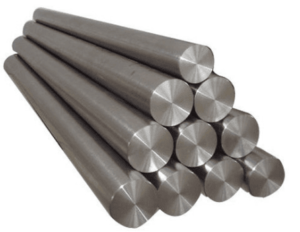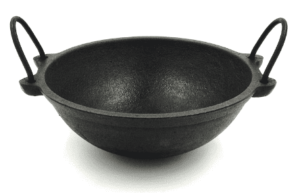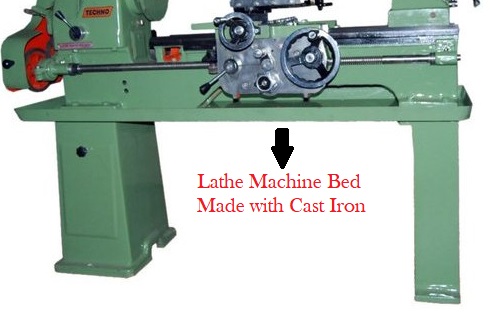What is Cast Iron?

Iron is one of the Ferrous Materials whereas; Cast Iron and Its Types are obtained by the combination of Iron and Carbon. It is also called as Pig Iron. It has a carbon percent of about 1.7 to 4.5. Additional to iron and carbon, it consists of silicon, manganese, Phosphorus, and sulphur in it. It is well known for its low melting point, good machinability, wear resistance, good deformation resistance, and fluidity.
Due to the variation of carbon percent, the cast iron classified into different types; the types of cast irons are Grey, White, Malleable, Chilled, and Ductile. It is one of the most using materials for different purposes, such as building houses, bridges, dams, etc. and in automobile parts too.
Also Read:
- Pipe Bending Machine – Parts, Working, Advantages, and Applications
- Water Jet Machining Process – Parts, Working, Advantages, and Applications.
Table of Contents
Properties of Cast Iron
According to the nature of the material, Cast Iron and all its types are Brittle in nature except Malleable Type. Mainly, its properties are
- Casting Properties
- High Compressive Strength, and
- Excellent Machinability.
Here are some of its properties that is used to select type for various applications.
Tensile Strength – The tensile strength lies between 100 MPa to 200 MPa (Mega Pascal).
Compressive Strength – The compressive strength lies between 400 MPa to 1000 MPa.
Shear Strength – Cast iron has a shear strength of 120 MPa (Mega Pascal).
Types Of Cast Iron

Pig Iron is classified into different types according to the carbon percentage and some other materials quantity in combination. The carbon percentage is the main thing that results in classification of different types. There are 5 different types of cast irons, they are as follows
- Gray Cast Iron
- White Cast Iron
- Malleable Cast Iron
- Chilled Cast Iron
- Ductile Cast Iron
1. Gray Cast Iron and Its Properties
Gray Cast Iron is one of the type of pig iron that consist graphite in its micro-structure. Due to the presence of graphite, it possesses good stiffness and high thermal conductivity. The material compositions are as follows:
- Carbon Percentage – 3 to 3.5 %
- Silicon Percentage – 1 to 2.75%
- Manganese Percentage – 0.4-1.0%
- Phosphorus Percentage – 0.15-1%
- Magnesium Percentage – 0.02-0.15
- Sulphur Percentage – 0.02-0.15%
2. White Cast Iron & Its Properties
White Cast Iron consist mostly cementite and pearlite in its microstructure and no graphite is found. Due to the absence of graphite, the white cast is hard and brittle. We can say that this type of iron is difficult to machine and also it has high compressive strength. The compositions of the materials are
- Carbon Percentage – 0.15-2.3%
- Silicon Percentage – 0.85-1.2 %
- Manganese Percentage – >0.4 %
- Phosphorus Percentage – 0.2 %
- Sulphur Percentage – >0.12 %
- Magnesium Percentage – 0.02% to 0.01%
3. Malleable Cast Iron & Its Properties
Malleable Cast Iron is another type of pig iron where the carbon is combined with the cementite. This type of pig iron possess has a lot of similarities with Ductile Type. Malleable cast has good ductility, fracture toughness, and good machining property. The compositions are as follows
- Carbon Percentage – 2.16 to 2.9%
- Silicon Percentage – 0.9 to 1.9%
- Phosphorus Percentage – 0.02 to 0.15%
- Manganese Percentage – 0.15 to 1.25%
- Magnesium Percentage – 0.05%
4. Chilled Cast Iron & Its Properties
The chilled cast iron is another type of pig iron that consist compositions like
- Carbon Percentage – 1.8 to 4 %
- Silicon Percentage – 1 to 3 %
- Phosphorus Percentage – 0.063
- Manganese Percentage – 1.04
5. Ductile Cast Iron Properties
Ductile Cast Iron does have good ductility and possesses the same properties as Malleable. It is also called Nodular Cast Iron and most important type. It has the compositions as follows:
- Carbon Percentage – 3.2 to 3.6%
- Silicon Percentage – 2.2 to 2.8%
- Manganese Percentage – 0.1 to 0.2%
- Magnesium Percentage – 0.03 to 0.04%
Additionally, there will be a small amount of phosphorus, sulphur, and copper materials too.
Advantages of Types Of Cast Iron
Cast Iron and its types use for several purposes because of its greater advantages, which includes
- They are suitable for casting purposes.
- Pig Iron is brittle, and ductile in nature.
- They can be machined easily and even used as tools too.
- They can observe the vibrations in machine tools or machines.
- They are high thermal conductivity materials.
- They are tough in nature.
Disadvantages of Cast Iron
The disadvantages of cast iron and its types are
- When we compare the cast iron with other metals like steel, we can say that it possesses poor machinability.
- Some of the types of pig iron have less brittleness, so at high loads, the cracks develop, due to which the material will fail suddenly.
- It can be rusted easily and can fail soon.
- According to the weight, it is heavy compared to other metals like Steel, Aluminum, etc.
- It cannot be used at sudden loadings.
- Few types like white and chilled are not suitable for machining purposes because they are hard and possess high compressive strength.
Applications of Types of Cast Irons

The applications of types of cast irons are
- Due to the high stiffness and thermal conductivity of the gray cast iron, they are used for machine tool bodies, automotive cylinder blocks, engine heads, agricultural Implements, etc.
- As white cast iron is hard and possesses high compressive strength, it is used to manufacture car wheels, rolls for crushing grains, jaw crusher plates, etc.
- Due to the good ductility, malleable type is used for the Hubs of wagon wheels, Small Fittings for Railway Rolling Stock, Pipe Fittings, Door Hinges, etc.
- Chilled cast is used to make the stoves and for producing the baking instruments.
- As ductile type of pig iron has high ductility, it is used to prepare the automotive parts, gear houses, wheels, etc.
- They are used at high temperature working spaces.
- They are used to manufacture the bed, and carriages for several machine tools and machines to observe the vibrations they produce while working.
Conclusion
Cast Iron is one of the crucial metals, which playing a great role from the beginning of metal era. It is mainly used to bear and observe high strengths. The types of cast iron (like malleable, white, gray, chilled, and ductile) are wide in usage and never let other metals to replace them. The different types of cast iron applications are depend upon the requirement of the situation and position. So, it will not be a solution to use only single type of cast for all the requirements.
Frequently Asked Questions
What is Cast Iron and its composition?
The cast iron is one of the type of Ferrous metals that consists carbon as the main composition in its structure. The composition of the carbon is around 1.7 to 4.75. The classification of its types depends upon the carbon percentage and few other metals.
What are Cast Iron Properties?
The properties of the cast iron includes
- Tensile Strength
- Compressive Strength, and
- Shear Strength.
What are the Types of Cast Iron?
The types of cast iron is depends upon the carbon percentages and few more compositions like Silicon, Phosphorus, Manganese, and Magnesium. Its types are
- Malleable Cast Iron
- White Cast Iron
- Ductile Cast Iron
- Chilled Cast Iron
- Gray Cast Iron
Find out more interview/technical questions right here
What are the Uses of Cast Iron?
The uses of cast iron are wide. Few of its uses are
- Used for Beds and Carriages for machines.
- To construct the Automobile Parts, Structures, and Frames.
- Used in construction of Buildings.
- It is famous for its applications in Kitchen items like Utensils, and Pots.
- It is used to manufacture the Water and other fluid flowing Pipes.
- It can be used in the Ships parts like Anchors, etc.
- Types of Cast Iron can be used to produce Bolts and Nuts.